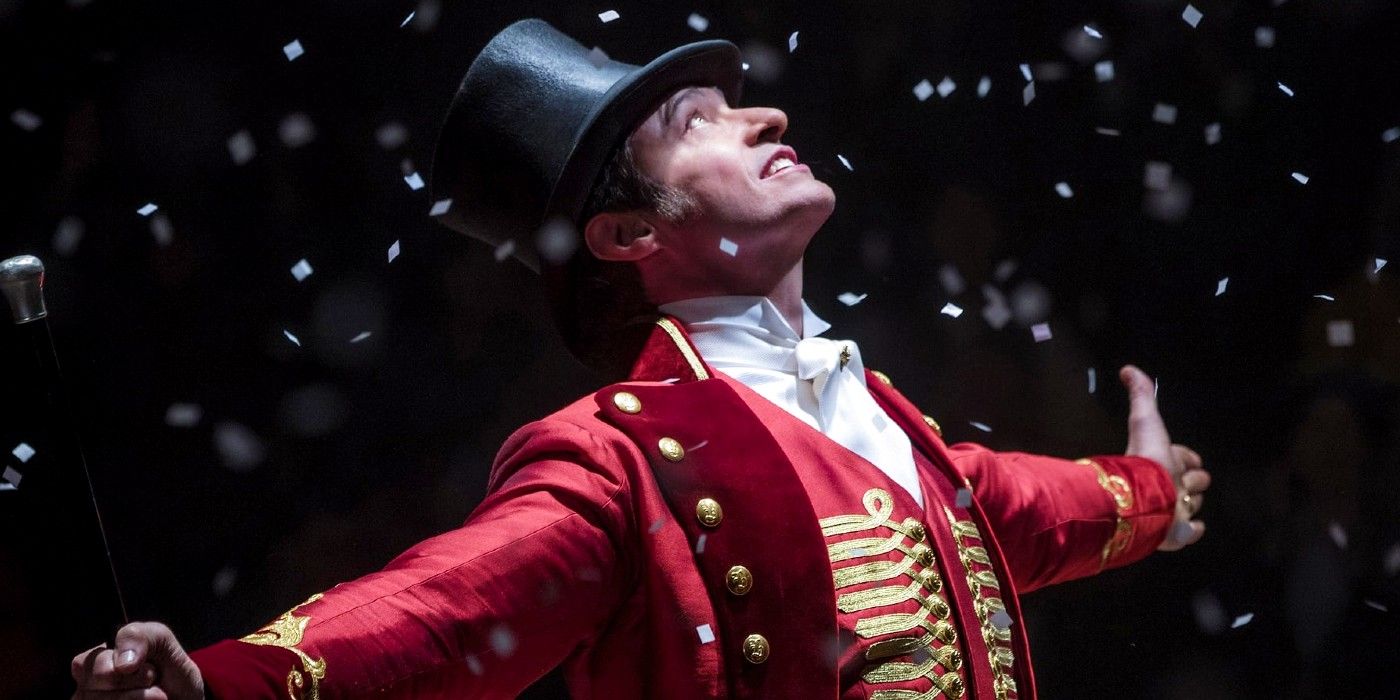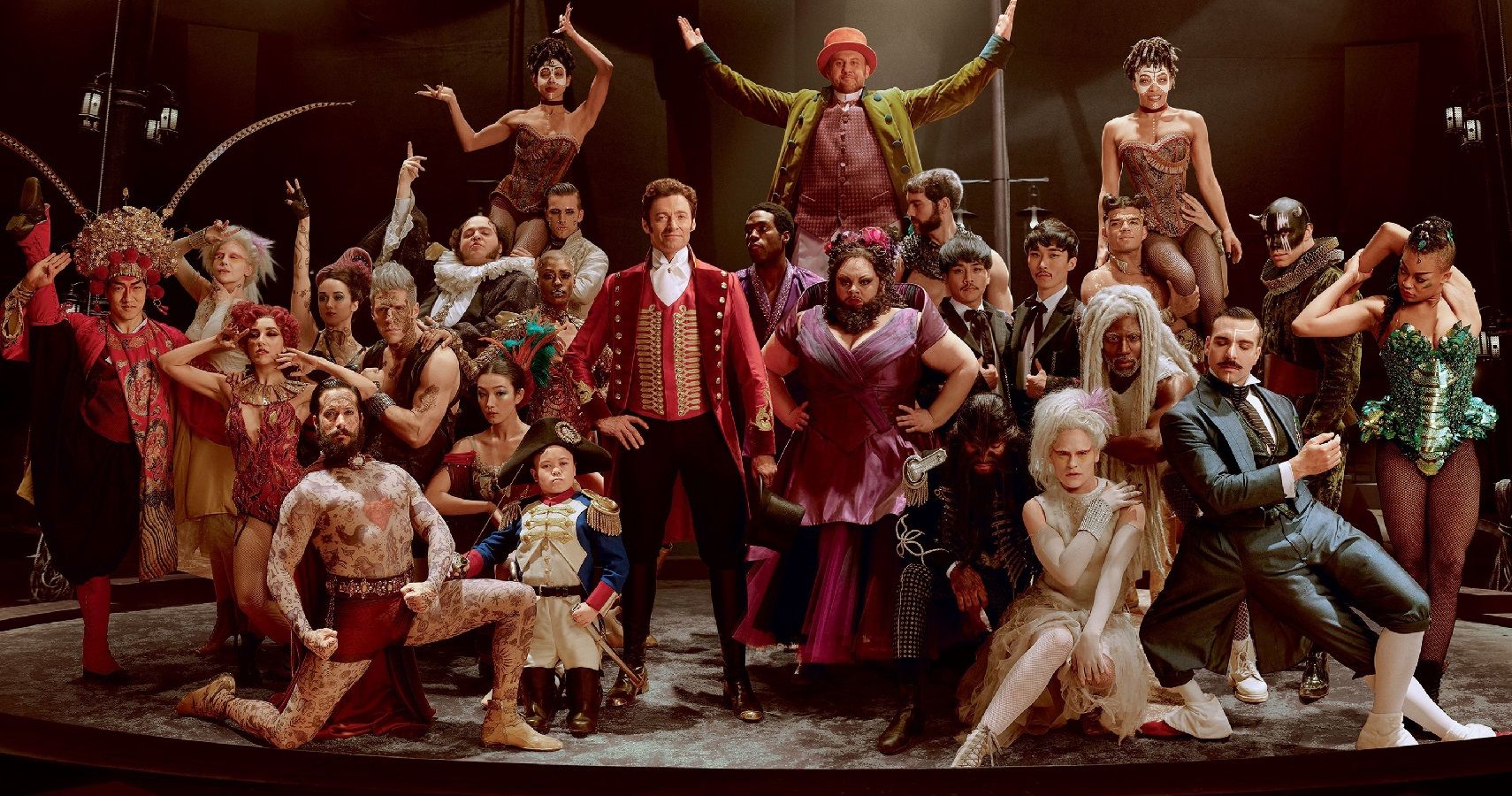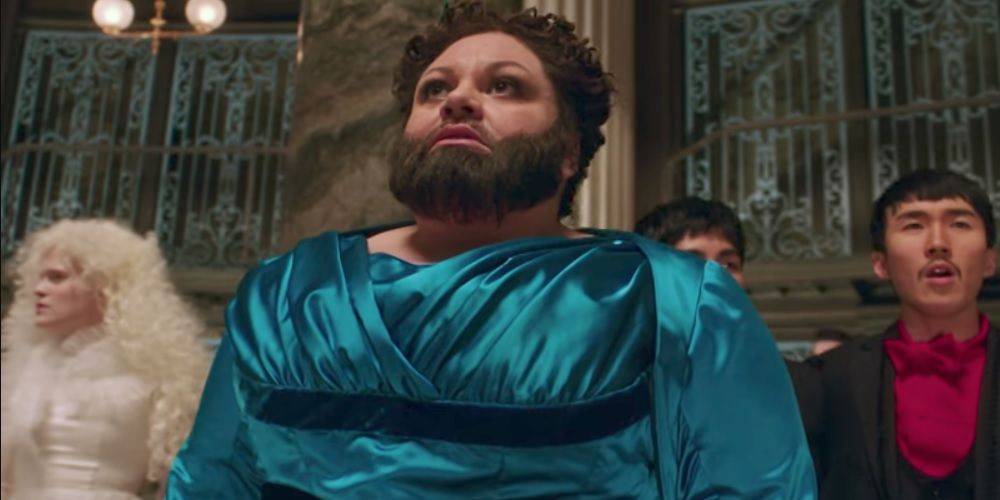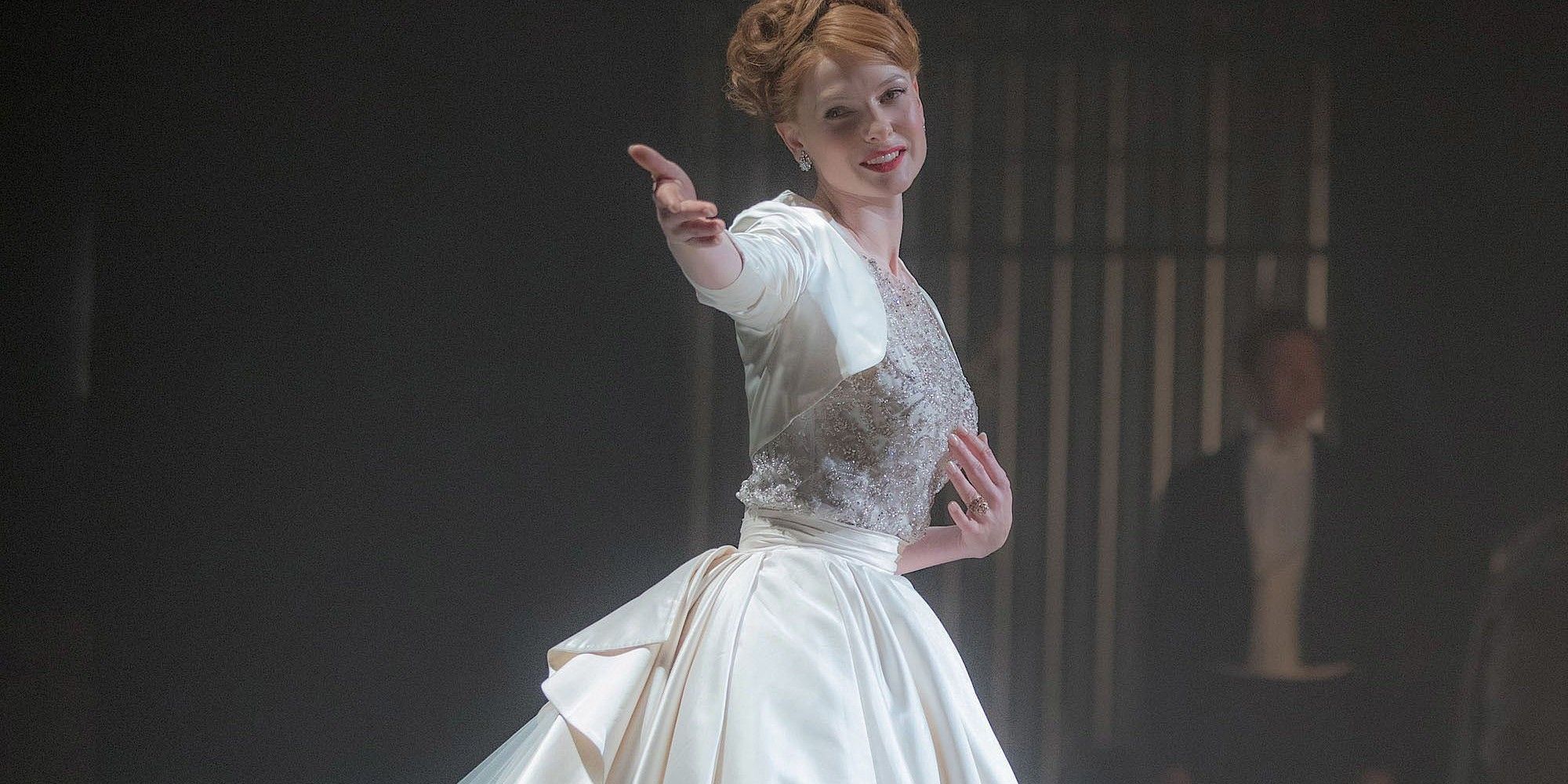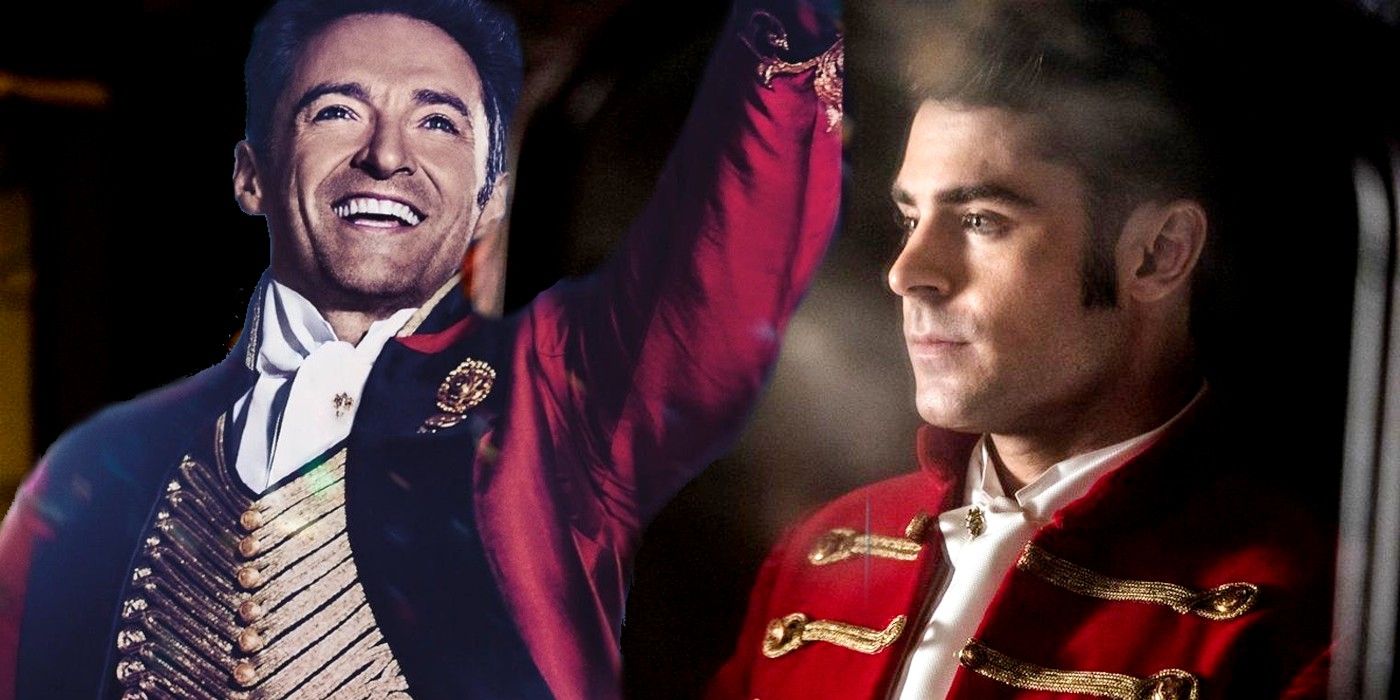The Greatest Showman portrays P.T. Barnum (Hugh Jackman) as a visionary who rose to prominence and empowered outcasts through his circus but how close is it to the truth? The movie-musical feels heroic, inspirational, and, most importantly, comfortable: there’s no moral confusion in rooting for a man who came from nothing as he uses his talents to help himself, his family, and people who have been shunned by society. But the true story of P.T. Barnum is far less straightforward and far more disturbing.
Audiences may think that The Greatest Showman tells the true story of PT Barnum's Circus, but Barnum’s real life played out very differently from what the film shows on screen. The movie twists the chronology, invents entire characters, and somewhat inevitably leaves out unflattering facts about Barnum. The result is a feel-good film that is emotionally satisfying but historically inaccurate.
Related: Greatest Showman 2 Updates: Sequel Release Date & Stageshow Details
There are many reasons why a biopic may take creative liberties – sometimes it is for dramatic effect or to maintain a specific mood, or the creators simply may not have enough room for some events. Had The Greatest Showman shown what Barnum was really like, the film would have had a much darker tone, and while that may have suited the early suggestion that it would be an Oscar contender, it would probably also have sabotaged its popularity. It also probably wouldn't have been released on Disney+ as a companion to Hamilton. Let’s break down the most significant changes that The Greatest Showman makes and take a look at who Barnum really was.
Barnum Didn’t Get Into the Circus Until His Sixties
The Greatest Showman changes the order of events in Barnum’s life. In the movie, Barnum’s circus came first, and his tour with Jenny Lind came afterward. In truth, however, Barnum only began his circus after several other failed endeavors. After working several jobs, Barnum decided that he would be successful if he could “get hold of a public exhibition.” At age 25, he found his big break in a paralyzed, blind, elderly enslaved woman named Joice Heth.
Barnum’s acquaintance owned a slave who he claimed was 161 years old and worked as a nurse to George Washington. Although slavery was already illegal in New York, Barnum found a loophole in the law and purchased her. He exhibited her, also advertising that she was 161 years old – he later claimed that he believed this to be the truth. After her death, he sought to capitalize on her one last time and sold tickets to her live autopsy. The autopsy showed that she was likely about 80 years old, and Barnum faced immense criticism for his scam.
Barnum continued with his exhibitions, displaying a “Fiji Mermaid” – another hoax. He served two terms in Connecticut legislature, invested poorly in the 1850s, lost a large chunk of his money, and toured as a temperance speaker. All of these events occurred before Barnum began his circus at age 60, which he titled “P.T. Barnum’s Grand Traveling Museum, Menagerie, Caravan & Hippodrome.”
Why Jeremy Jordan Sang For Hugh Jackman During Greatest Showman Demo
Tom Thumb & The Truth Of How Barnum Brought Together His Acts
Tom Thumb, played by Sam Humphrey, is portrayed as an adult in The Greatest Showman. The real Barnum told audiences that he was 11. In reality, he was only 4 when Barnum began displaying him. Thumb stopped growing when he was 6 months old and was 25 inches tall but eventually grew to be 39 inches. Barnum trained him intensely, instructing him to imitate famous historical figures. On stage, he would drink wine at 5 years old and smoke cigars at 7 years old to entertain the audience.
One of Barnum’s other main acts was The Bearded Lady – Lettie Lutz (Keala Settle) in The Greatest Showman and Annie Jones in real life. The film portrays Lutz as an adult who willingly chose to work with Barnum after being dazzled by his charm (and one of The Greatest Showman's best songs, "Come Alive"). In real life, he started displaying Jones when she was just 1 year old. He called her the “The Infant Esau,” and offered her parents a $150 weekly salary to use Jones as an exhibition. She spent 36 years working for Barnum, and as she grew up, she developed a talent in music – this talent is honored in The Greatest Showman, as Lutz belts out “This Is Me.”
Barnum & Jenny Lind’s Scandal: What Really Happened?
The Greatest Showman and the 1980 musical Barnum, based on Barnum’s life, both portray a scandalous relationship between Barnum and Jenny Lind (Doctor Sleep's Rebecca Ferguson). In real life, however, there was nothing more than an extremely profitable business relationship between them. Barnum planned a 150-date tour and offered Lind $1,000 a performance. The tour made the modern-day equivalent of $21 million and turned Lind into a sensation in America.
Unlike Barnum’s other exhibitions, this one was no hoax: Lind was just as good as he advertised. However, she was renowned for her voice, not her beauty. She did not follow fashion trends and rarely dressed up, and she generally seemed uninterested in romance – much less a romance with Barnum. She was known for being virtuous, encouraging her audience to donate to charities, so an affair with Barnum would have gone against her morals. As for Barnum, he simply did not have the time for one.
Barnum’s Real Partnerships
In The Greatest Showman, Barnum has a close relationship with Phillip Carlyle (Zac Efron) and a contentious relationship with James Gordon Bennett (Paul Sparks). Neither of these portrayals is entirely accurate. The character Carlyle has no real-life counterpart – he is completely fictional. In The Greatest Showman, he seems to serve as a personification of Barnum’s ability to set people free. He also added a romantic subplot to the film, as he began a controversial interracial relationship with the trapeze artist Anne Wheeler (Zendaya), who also did not exist in real life.
Bennett, however, was a real person. As the founder, editor, and publisher of the New York Herald, Bennett was a pioneer of American journalism. His paper initially sold for a penny for four-pages, but it grew to have the world’s largest newspaper circulation. While The Greatest Showman portrays Bennett as the opposite of Hugh Jackman's Barnum in that he was a part of the establishment, Bennett had just as much of a rags-to-riches story as Barnum.
The Greatest Showman does not portray the relationship between Barnum and Bennett inaccurately in its nature, but rather in its source. The relationship was contentious, but Bennett’s stance was not baseless as the movie portrays: Bennett started criticizing Barnum during the scandal surrounding Joice Heth and her public autopsy. In the film, he seems to have no reason to call Barnum a con artist, but he had sufficient evidence for his claims in real life.
Was Barnum A Good Man?
Hugh Jackman’s Barnum and the real Barnum are very different people – and one of them is significantly more likable than the other. Barnum exploited children, the elderly, and people with disabilities. Despite there being an anti-racist sentiment in the story of Carlyle and Anne, Barnum bought a slave after slavery was outlawed and exhibited her autopsy. Like the controversial accusation that Hamilton glorified slave owners by failing to acknowledge the fact that Alexander Hamilton owned slaves, this oversight doesn't tell the whole story. And these actions alone paint a grim picture of Barnum’s moral compass.
Barnum not only exploited vulnerable people but also used his platform to spread racism. He presented William Henry Johnson, a microcephalic Black man, as the “Missing Link” in one of his exhibitions shortly after Darwin published On the Origin of Species. He had many exhibitions of this nature. Barnum was an expert liar and used that skill to his advantage frequently. He is widely credited for saying, “There’s a sucker born every minute.” While it’s unclear whether he actually said this, it certainly seems to sum up his attitude.
In The Greatest Showman, Barnum is a hero. He brings outcasts into the limelight, giving them self-confidence and changing how society viewed people who were different from them. He is the perfect protagonist and the perfect version of the real figure for Disney+. But the real Barnum was not anything close to this man, and most likely would not have aspired to be.
The real Barnum would likely be happy with his portrayal in The Greatest Showman, given how devoted he was to convincing people that he was not a con-artist. Barnum would probably be glad to see himself placed in such a flattering light, despite the film’s inaccuracies. There is some irony in that Barnum and The Greatest Showman operate in the same way: in lies and half-truths. These changes to real life create a heartwarming and moving film that left many viewers misinformed, but satisfied. Barnum believed that audiences enjoyed being lied to, and The Greatest Showman proves him right.

